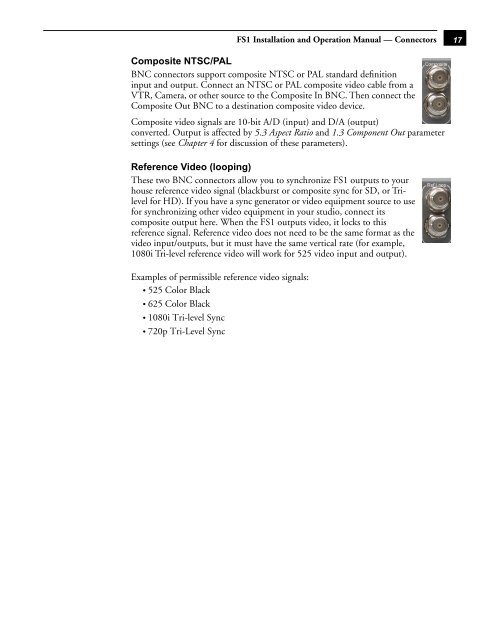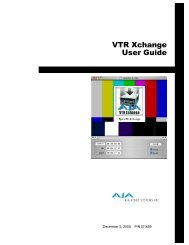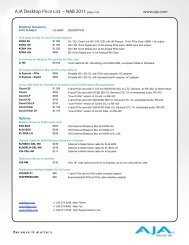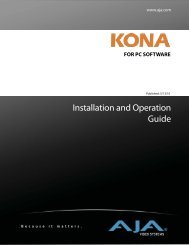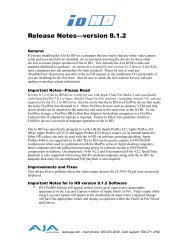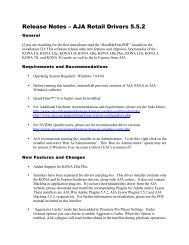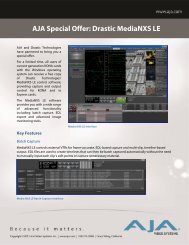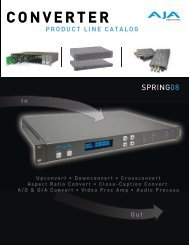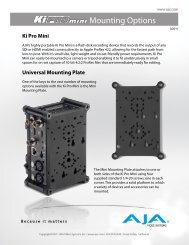AJA FS1 Installation and Operation Guide
AJA FS1 Installation and Operation Guide
AJA FS1 Installation and Operation Guide
Create successful ePaper yourself
Turn your PDF publications into a flip-book with our unique Google optimized e-Paper software.
<strong>FS1</strong> <strong>Installation</strong> <strong>and</strong> <strong>Operation</strong> Manual — Connectors<br />
Composite NTSC/PAL<br />
BNC connectors support composite NTSC or PAL st<strong>and</strong>ard definition<br />
input <strong>and</strong> output. Connect an NTSC or PAL composite video cable from a<br />
VTR, Camera, or other source to the Composite In BNC. Then connect the<br />
Composite Out BNC to a destination composite video device.<br />
Composite video signals are 10-bit A/D (input) <strong>and</strong> D/A (output)<br />
converted. Output is affected by 5.3 Aspect Ratio <strong>and</strong> 1.3 Component Out parameter<br />
settings (see Chapter 4 for discussion of these parameters).<br />
Reference Video (looping)<br />
These two BNC connectors allow you to synchronize <strong>FS1</strong> outputs to 1 your<br />
house reference video signal (blackburst or composite sync for SD, or Trilevel<br />
for HD). If you have a sync generator or video equipment source to use<br />
for synchronizing other video equipment in your studio, connect its<br />
composite output here. When the <strong>FS1</strong> outputs video, it locks to this<br />
reference signal. Reference video does not need to be the same format as the<br />
video input/outputs, but it must have the same vertical rate (for example,<br />
1080i Tri-level reference video will work for 525 video input <strong>and</strong> output).<br />
Examples of permissible reference video signals:<br />
• 525 Color Black<br />
• 625 Color Black<br />
• 1080i Tri-level Sync<br />
• 720p Tri-Level Sync<br />
17


